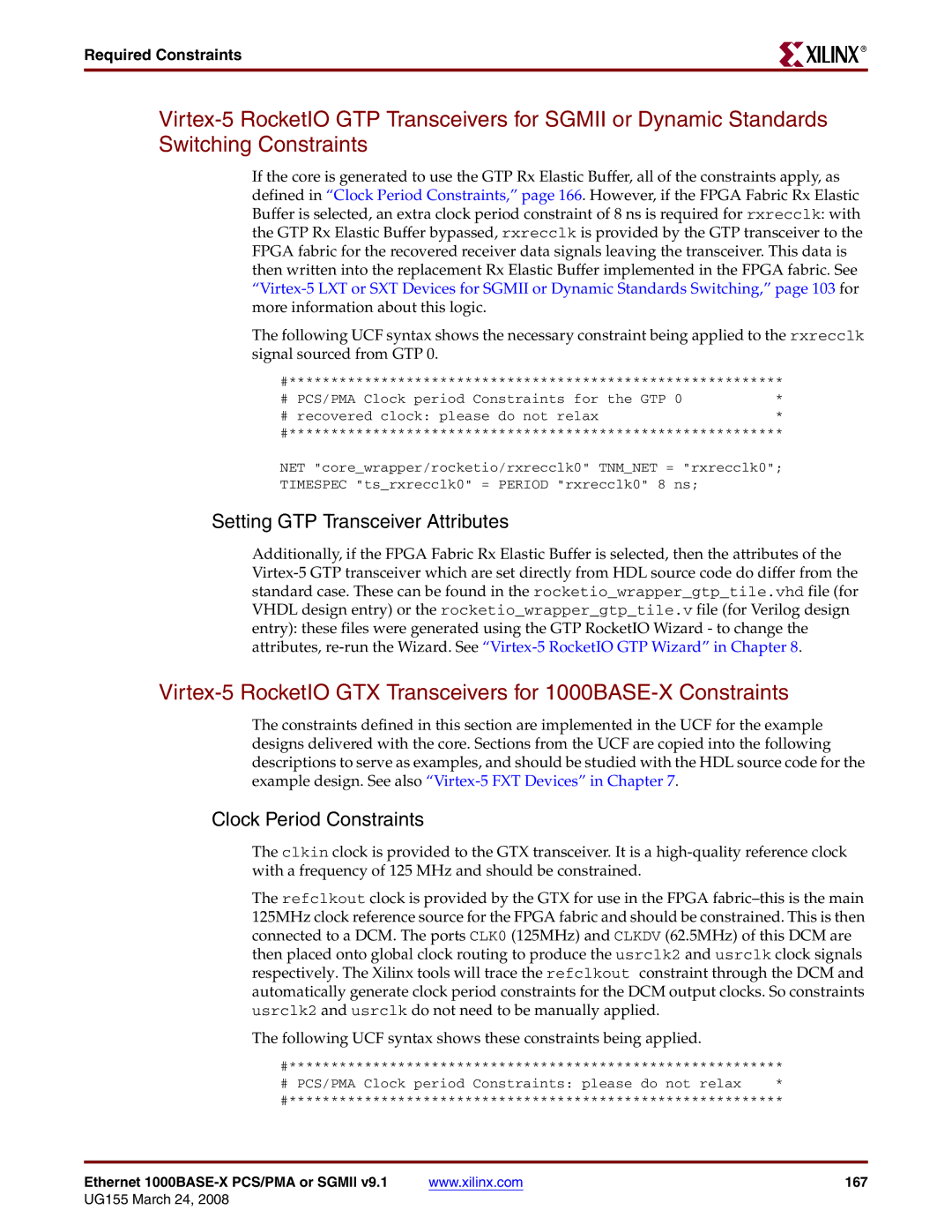Required Constraints
R
If the core is generated to use the GTP Rx Elastic Buffer, all of the constraints apply, as defined in “Clock Period Constraints,” page 166. However, if the FPGA Fabric Rx Elastic Buffer is selected, an extra clock period constraint of 8 ns is required for rxrecclk: with the GTP Rx Elastic Buffer bypassed, rxrecclk is provided by the GTP transceiver to the FPGA fabric for the recovered receiver data signals leaving the transceiver. This data is then written into the replacement Rx Elastic Buffer implemented in the FPGA fabric. See
The following UCF syntax shows the necessary constraint being applied to the rxrecclk signal sourced from GTP 0.
#***********************************************************
# | PCS/PMA Clock period Constraints for | the GTP 0 | * |
# | recovered clock: please do not relax |
| * |
#***********************************************************
NET "core_wrapper/rocketio/rxrecclk0" TNM_NET = "rxrecclk0";
TIMESPEC "ts_rxrecclk0" = PERIOD "rxrecclk0" 8 ns;
Setting GTP Transceiver Attributes
Additionally, if the FPGA Fabric Rx Elastic Buffer is selected, then the attributes of the
The constraints defined in this section are implemented in the UCF for the example designs delivered with the core. Sections from the UCF are copied into the following descriptions to serve as examples, and should be studied with the HDL source code for the example design. See also
Clock Period Constraints
The clkin clock is provided to the GTX transceiver. It is a
The refclkout clock is provided by the GTX for use in the FPGA
The following UCF syntax shows these constraints being applied.
#***********************************************************
# PCS/PMA Clock period Constraints: please do not relax | * | |
#*********************************************************** | ||
|
|
|
Ethernet | www.xilinx.com | 167 |
UG155 March 24, 2008 |
|
|
